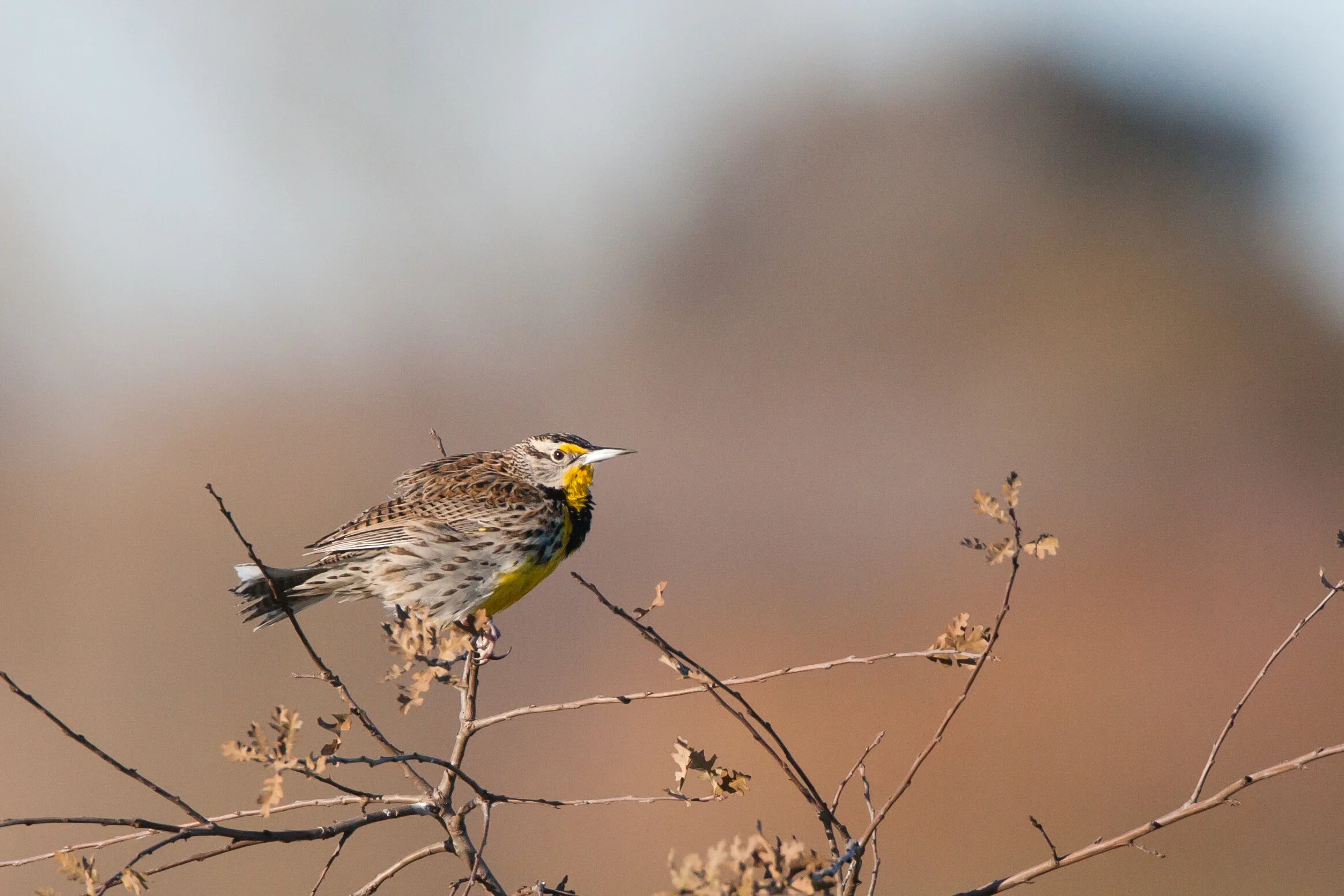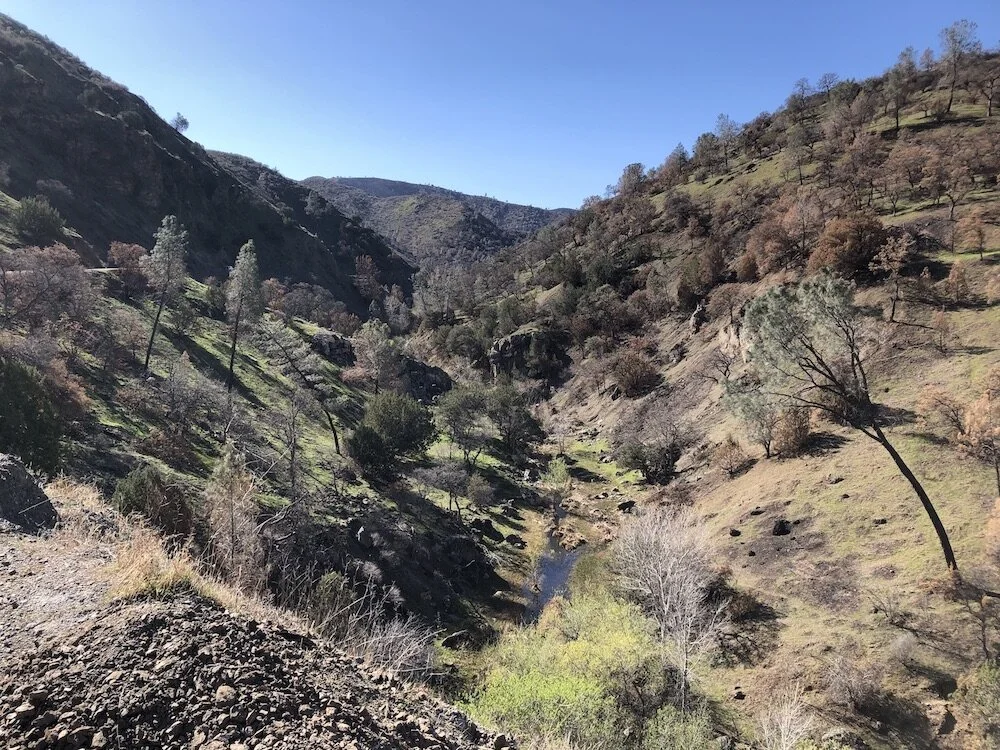Our east hills are hotter and drier than the Santa Cruz range to the west. Grassland and Oak Savanna dominates much of the lower elevations, with Gray Pine higher up. There is much variety here as the county extends to the remote east side of Mount Hamilton.
Fall/Winter Guides
Whether you want a relaxing lakeside drive with easy bird watching, or a vigorous hike through the rolling hills, Coyote Lake in Gilroy is a prime attraction for birdwatchers. Beautiful scenery is the backdrop to lots of overwintering waterfowl and wild animals like deer, wild boar, Wild Turkey and California Quail that are habituated to people. Come for the Bald Eagles and courting Western and Clark’s Grebes and you will find so much more.
Sierra Vista OSP is in the eastern foothills of Santa Clara County. It is a good location to visit year-round, but especially in the winter when grassland loving sparrows and Ferruginous Hawk may be present. There are few crowds in the early morning and weekdays and the views are fantastic.
Coyote Lake County Park is a wonderfully diverse park in the South County. We’ll travel the out-and-back spur to Roop Pond, and the hiking-only Rancho La Polka Loop trail, both of which are lightly traveled, affording more opportunity for solitude with the birds! With a small pond, oak woodland, and oak savannah transitioning into grassland, this can be an excellent area for all of the typical oak woodland birds and overwintering raptors.
El parque del condado de Coyote Lake es un parque maravillosamente diverso en el sur del condado. Haremos un sendero de ida y vuelta en forma de espuela hasta el estanque Roop y el sendero Rancho La Polka Loop, solo para caminantes, ambos con poco recorrido, lo que brinda más oportunidades para la soledad con los pájaros. Con un pequeño estanque, un bosque de robles y una sabana de robles que se convierte en pradera, esta puede ser un área excelente para todas las aves típicas de los bosques de robles y las aves rapaces que invernantes.
Looking for a picturesque “get-away” to a beautiful area in the fall and winter without having to travel too far from home? The Sandy Wool Lake area of Ed R. Levin County Park is a nice escape in the east hills to spot birds and enjoy nature. Take a leisurely, less than 1 mile walk around Sandy Wool Lake in search of resident and returning wintering birds, all while enjoying views of the Diablo Range’s rolling hills.
¿Está buscando una “escapada” pintoresca a una hermosa zona en otoño e invierno sin tener que viajar demasiado lejos de casa? El área del lago Sandy Wool dentro del parque del condado Ed R. Levin es una agradable escapada en las colinas del este para observar aves y disfrutar de la naturaleza. En esta caminata tranquila de menos de 1 milla alrededor del lago Sandy Wool buscaremos aves residentes y las que regresan en invierno, mientras disfruta de las vistas de las colinas onduladas de Diablo Range.
Spring/Summer Guides
At Henry Coe State Park, you are in the wild, among an intact community of native flora and fauna. There are beautiful panoramic views of the hills around Gilroy, reaching to the Santa Cruz Mountains and within this giant of a park you have long vistas of mountain ridges and valleys like Sycamore Canyon and Pine Ridge. In spring, migrant birds are returning and many birds are nesting, so there is always something exciting to find. Abundant, diverse spring wildflowers and their pollinators make for a beautiful and interesting distraction.
The Spring Valley Area at Ed Levin Park on the east side of San Jose in the Diablo Foothills offers one of the best places in Santa Clara County to observe migratory hummingbirds in spring. Enjoy an easy walk around the Spring Valley Pond and spend some time at the “Magic Tree” watching the hummingbirds come and go, or take the more challenging Spring Valley Trail for a walk in the grassy hills and surrounding woodlands.
Penitencia Creek Trail in east San José is a beautiful, shaded creek side trail with easy level walking where wildlife and birds abound. While it can be crowded after 10 a.m. on weekends, early mornings offer solitude and silence and increase the chance for wildlife and bird encounters. Deer (and their fawns) are especially common, and bobcats, snakes, and other creatures are sometimes seen. The creek hosts numerous Steelhead Trout, and in the past may have supported Coho Salmon.
Much has changed since the fire of 2020, but this area remains productive for birding. Drive through grassland, cottonwood riparian, oak savanna, and canyon habitats in Stanislaus County to search for Grasshopper Sparrow, Blue Grosbeak. There is also a chance of Costa’s Hummingbird and Greater Roadrunner. Continue toward San Antonio Valley for Bell’s Sparrow and Lewis’s Woodpecker.
Hunting Hollow is nature lover’s paradise. Located in the South County east of Morgan Hill, it is a perfect place to bird without the crowds. Even if the parking lot looks full, trail conditions should still be peaceful. The broad trail takes you along a riparian corridor among oak woodlands and meadows, complete with stream crossing and vernal pools. The route covered here ends at a pond that occasionally has Wood Ducks and other surprises.
Visit the quiet Rosendin Park in the rolling hills of Morgan Hill for a wide variety of birds, the seasonal pond, sweeping views and the wildflowers!
Joseph D. Grant County Park is a large, uncrowded park in the east foothills of San José. It features a variety of habitats, wide trails, and easy access to parking.














Within the east San Jose foothills lies Joseph D. Grant Park, Santa Clara county’s largest park. Included in this park are over 50 miles of walking trails and an impressive variety of bird species at any time of the year. In the winter months two excellent stopping points within Joseph D. Grant Park are Grant Lake and the more secluded, adjacent McCreery Lake. Just past the main park entrance on Mt. Hamilton Rd. (Hwy. 130), they are easily accessible and provide a wide variety of waterfowl and shorebirds in the peaceful oak woodland hills. Within this same area you will also encounter many raptors, woodpeckers, and songbirds.